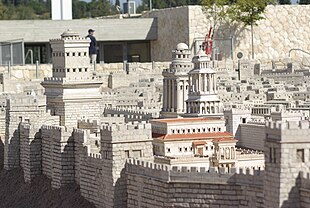
Herod's Palace at Jerusalem was built in the last quarter of the 1st century BC by Herod I the Great, King of Judea from 37 BC to 4 BC. It was the second most important building in Jerusalem, after the Temple itself, in Herod's day and was situated at the northwestern wall of the Upper City of Jerusalem (the Western Hill abandoned after the Babylonian sacking of Jerusalem). Herod lived in it as a principal residence, but not permanently, as he owned other palace-fortresses, notably at Masada, Herodium and Caesarea Maritima. Nothing remains of the Jerusalem Palace today except for portions of the surrounding wall-and-tower complex, much altered and generally known as "the Citadel" (see Tower of David). The site of the former palace is now occupied by the Tower of David Museum, a police station, and a former Turkish barracks/prison known as the Kishle.